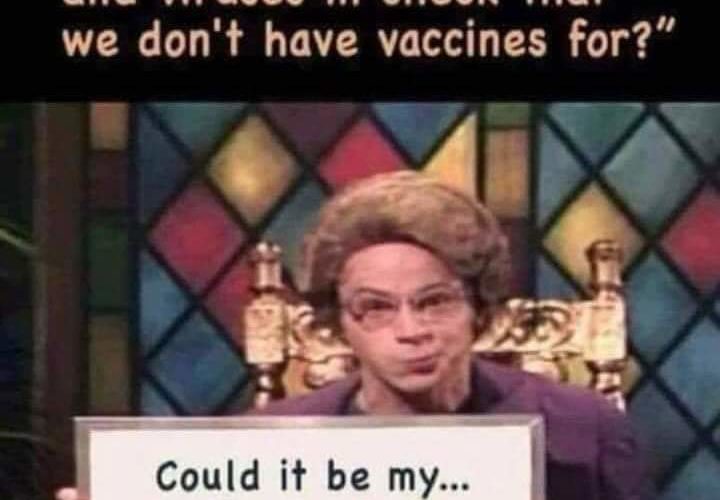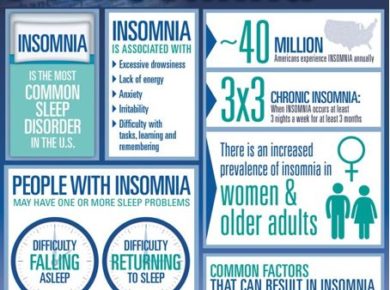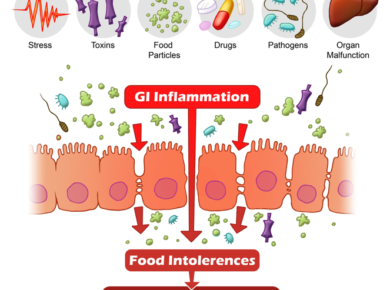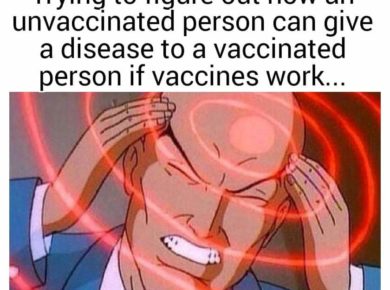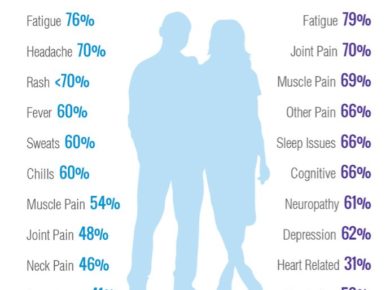It has become very clear that cholesterol does not cause all the issues that we have been told.
I will not go over this now, because I have done this in the past extensively. Actually, I spent 8 years writing a book on this topic.
You can consult the references I used to support this point if you are interested:
I used more than 1600 scientific references to show that cholesterol is not the enemy.
On the contrary, it is our friend! 😊
As a matter of fact, cholesterol is actually needed for a strong immune system.
According to the CDC, people older than 65y are at higher risks for flu complications.
https://www.cdc.gov/flu/highrisk/index.htm
Interestingly, about 50% of this population take statins, a cholesterol-lowering drug.
I would like to propose that people who die from the flu or other infections are mostly this population: people above 65y old and on statins.
First, let’s look at this paper:
https://bmjopen.bmj.com/content/6/6/e010401
“Conclusions: High LDL-C is inversely associated with mortality in most people over 60 years.”
Then, these ones:
https://pubmed.ncbi.nlm.nih.gov/19156198/
Netea, Mihai G et al. “Circulating lipoproteins are a crucial component of host defense against invasive Salmonella typhimurium infection.” PloS one vol. 4,1 (): e4237. doi:10.1371/journal.pone.0004237
Huemer H, P, Menzel H, J, Potratz D, Brake B, Falke D, Utermann G, Dierich M, P: Herpes Simplex Virus Binds to Human Serum Lipoprotein. Intervirology 1988;29:68-76. doi: 10.1159/000150031
Morrison, D C, and R J Ulevitch. “The effects of bacterial endotoxins on host mediation
Bone, R. C. “Gram-Negative Sepsis. Background, Clinical Features, and Intervention.” Chest, vol. 100, no. 3, Sept. 1991, pp. 802–08. PubMed, doi:10.1378/chest.100.3.802.
Cavaillon, J. M., et al. “Cytokine Response by Monocytes and Macrophages to Free and Lipoprotein-Bound Lipopolysaccharide.” Infection and Immunity, vol. 58, no. 7, July 1990, pp. 2375–82.
Feingold, K. R., et al. “Role for Circulating Lipoproteins in Protection from Endotoxin Toxicity.” Infection and Immunity, vol. 63, no. 5, May 1995, pp. 2041–46.
Netea, M. G., et al. “Low-Density Lipoprotein Receptor-Deficient Mice Are Protected against Lethal Endotoxemia and Severe Gram-Negative Infections.” Journal of Clinical Investigation, vol. 97, no. 6, Mar. 1996, pp. 1366–72. Crossref, doi:10.1172/JCI118556.
Sigel, Stefanie, et al. “Apolipoprotein B100 Is a Suppressor of Staphylococcus Aureus-Induced Innate Immune Responses in Humans and Mice.” European Journal of Immunology, vol. 42, no. 11, Nov. 2012, pp. 2983–89. PubMed, doi:10.1002/eji.201242564.
Amulic, Borko, et al. “Neutrophil Function: From Mechanisms to Disease.” Annual Review of Immunology, vol. 30, 2012, pp. 459–89. PubMed, doi:10.1146/annurev-immunol-020711-074942.
Memon, R. A., et al. “Infection and Inflammation Induce LDL Oxidation in Vivo.” Arteriosclerosis, Thrombosis, and Vascular Biology, vol. 20, no. 6, June 2000, pp. 1536–42.
Peterson, M. Michal, et al. “Apolipoprotein B Is an Innate Barrier against Invasive Staphylococcus Aureus Infection.” Cell Host & Microbe, vol. 4, no. 6, Dec. 2008, pp. 555–66. PubMed, doi:10.1016/j.chom.2008.10.001.
Hofer, F., et al. “Members of the Low Density Lipoprotein Receptor Family Mediate Cell Entry of a Minor-Group Common Cold Virus.” Proceedings of the National Academy of Sciences of the United States of America, vol. 91, no. 5, Mar. 1994, pp. 1839–42. PubMed, doi:10.1073/pnas.91.5.1839.
Sinnis, P., et al. “Remnant Lipoproteins Inhibit Malaria Sporozoite Invasion of Hepatocytes.” The Journal of Experimental Medicine, vol. 184, no. 3, Sept. 1996, pp. 945–54. PubMed, doi:10.1084/jem.184.3.945.
Grunfeld, C., and K. R. Feingold. “Tumor Necrosis Factor, Interleukin, and Interferon Induced Changes in Lipid Metabolism as Part of Host Defense.” Proceedings of the Society for Experimental Biology and Medicine. Society for Experimental Biology and Medicine (New York, N.Y.), vol. 200, no. 2, June 1992, pp. 224–27. PubMed, doi:10.3181/00379727-200-43424.
Beisel, W. R., and R. W. Wannemacher. “Gluconeogenesis, Ureagenesis, and Ketogenesis during Sepsis.” JPEN. Journal of Parenteral and Enteral Nutrition, vol. 4, no. 3, June 1980, pp. 277–85. PubMed, doi:10.1177/014860718000400307.
Šestan, Marko, et al. “Virus-Induced Interferon-γ Causes Insulin Resistance in Skeletal Muscle and Derails Glycemic Control in Obesity.” Immunity, vol. 49, no. 1, July 2018, pp. 164-177.e6. Crossref, doi:10.1016/j.immuni.2018.05.005.
Glass, Christopher K., and Jerrold M. Olefsky. “Inflammation and Lipid Signaling in the Etiology of Insulin Resistance.” Cell Metabolism, vol. 15, no. 5, May 2012, pp. 635–45. Crossref, doi:10.1016/j.cmet.2012.04.001.
Feingold, K. R., et al. “Endotoxin Rapidly Induces Changes in Lipid Metabolism That Produce Hypertriglyceridemia: Low Doses Stimulate Hepatic Triglyceride Production While High Doses Inhibit Clearance.” Journal of Lipid Research, vol. 33, no. 12, Dec. 1992, pp. 1765–76.
Netea, M. G., et al. “Bacterial Lipopolysaccharide Binds and Stimulates Cytokine-Producing Cells before Neutralization by Endogenous Lipoproteins Can Occur.” Cytokine, vol. 10, no. 10, Oct. 1998, pp. 766–72. PubMed, doi:10.1006/cyto.1998.0364.
Shor, Renana, et al. “Low Serum LDL Cholesterol Levels and the Risk of Fever, Sepsis, and Malignancy.” Annals of Clinical and Laboratory Science, vol. 37, no. 4, 2007, pp. 343–48.
Sharp, S. J., and S. J. Pocock. “Time Trends in Serum Cholesterol before Cancer Death.” Epidemiology (Cambridge, Mass.), vol. 8, no. 2, Mar. 1997, pp. 132–36.
All those papers support my point, that LDL is critical for the immune system to properly and optimally function.
Is that why the flu shot is not working effectively in people taking statins?
McLean HQ et al. Effect of statin use on influenza vaccine effectiveness. J Infect Dis 2016 Jul 28
Statin use correlated with reduced protection against a common flu strain, but seemed to provide some protection in unvaccinated users.
Because statins have anti-inflammatory effects in addition to cholesterol-lowering properties, researchers have begun to probe the possible effects of statins on infection. Now, Wisconsin researchers have retrospectively analyzed data from a large population-based registry on patients who presented with acute respiratory symptoms at an outpatient clinic from 2004 to 2015 to determine whether chronic statin use affects flu vaccine efficacy.
Of 3285 patients (age, ≥45 years), 63% had received seasonal flu vaccine and 37% had not. Among vaccine recipients, 79% were concurrently taking a statin.
Not surprisingly, statin users were older than nonusers, were more likely to have cardiovascular disease and diabetes, had lower LDL levels, and were more likely to have received both influenza and pneumococcal vaccines.
Statin use appeared to completely eliminate vaccine-derived protection against the A(H3N2) strain. Some similar patterns were identified for the other influenza strains isolated during the study, influenza B and pandemic A(H1N1), although none reached statistical significance.
Here’s another paper:
https://academic.oup.com/jid/article/214/8/1150/2388092
Effect of Statin Use on Influenza Vaccine Effectiveness
“Conclusions: Statin use was associated with reduced vaccine effectiveness against influenza A(H3N2) but not influenza A(H1N1) or influenza B.”
And here’s another one:
Influence of Statins on Influenza Vaccine Response in Elderly Individuals.
“Conclusion: This apparent immunosuppressive effect of statins on the vaccine immune response was most dramatic in individuals receiving synthetic statins.”
Overall, we can see that statins suppress the immune system. In other words, cholesterol is required for a strong immune system. When it is too low, your body can’t optimally fight infections.
God bless y’all 😊
Dr. Serge

